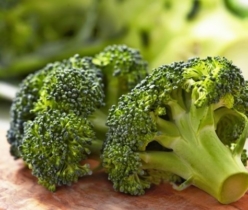Health care practitioners often recommend probiotics to patients, especially after antibiotic use, for the treatment of diarrhea or constipation, or in general to maintain a healthy gut microbiota.
However, not all probiotics are created equal.
It is very important to consider a few things before purchasing a probiotic. Otherwise, you could just waste your time and money.

What to consider before purchasing a probiotic:
- Multiple Strains. Many probiotics simply contain one strain of beneficial bacteria usually in the form of Lactobacillus acidophilus. Given the fact that the microbiome is vast and diverse, one must take a probiotic which contains many different strains of bacteria. Different strains can provide different functions. Here is a list of strains to look for:
| Bacillus subtilis | Lactobacillus brevis | Lactobacillus lactis |
| Bifidobacterium bifidum | Lactobacillus bilgaricus | Lactobacillus plantarum |
| Bifidobacterium breve | Lactobacillus casei | Lactobacillus reuteri |
| Bifidobacterium infantis | Lactobacillus delbruecki | Lactobacillus rhamnosus |
| Bifidobacterium longum | Lactobacillus DDS-1 | Lactobacillus salivarius |
| Lactobacillus acidophilus | Lactobacillus helveticus | Streptococcus thermophilus |
To give an example of how different strains work, Bifidobacterium bifidum is an anaerobe bacteria (this means it can survive without oxygen), that has been shown by studies to decrease the effect of diarrhea caused by rotavirus on the gut.(1)
Lactobacillus casei has been found to modulate the composition and metabolic activity of the intestinal flora. (2)
- Get the count right. In order to be effective in healing gastro-intestinal issues, probiotics should be in the billions. In fact, in autoimmune disorders such as Hashimoto’s Thyroiditis, it is recommended to get tens of billions of probiotics daily. However, one should start with a lower dose and work their way up.
- Can it survive stomach acid? By using a probiotic we want to inoculate the small intestine. However, if the coating of the probiotic is not acid resistant, a lot of the beneficial bacteria will not reach the small intestine. Manufacturers use enteric coatings for this purpose, but there is not sufficient research to know if these enteric coatings are effective and how many beneficial bacteria actually reach the gut.
One method you can try is to open the probiotic capsule and dilute it in water. Then take this mixture on an empty stomach. The stomach takes 15-20 minutes to empty liquid, therefore the transit time through the stomach and its harsh acid is less, giving more opportunity to probiotics to make it to the small intestine.(3)
- Time kills. Remember that probiotics are living organisms, therefore the longer they are living on a shelf, the more chances you are not getting a viable product. Always check the date of when the probiotics have been packaged to get an idea of their shelf-life. Also, once opened, keep probiotics refrigerated to protect them against further damage.
Foods with naturally occurring probiotics:
Sauerkraut or Kimchi
Sauerkraut and Kimchi are basically fermented cabbage. It’s a cheap and very easy way of obtaining probiotics whose count could easily reach 1 trillion! Probiotics found in fermented Chinese cabbage were found to reduce cholesterol levels in mice, therefore suggesting that it does contain live bacteria. (4)
Kambucha
Kambucha is a fermented beverage made from tea and bacteria cultures. It has been used for thousands of years to stimulate the metabolism and to support a healthy immune system. (5) Again, making it at home is easy and cheap.
Kefir and Yogurt
Kefir and yogurt are both forms of fermented milk products. Here, it is very important to note that not all people can tolerate dairy products and that in general, goat’s and sheep’s milk are more easily digested than cow’s milk.
Coconut or water kefir
If you do not tolerate dairy products, you can actually try to make kefir from water or coconut milk. You would need to purchase kefir grains.
Including any of the above into a daily meal plan will greatly increase the beneficial bacteria of your intestine and will result in better health and overall well-being.
Take home messages:
- Not all probiotics are created equal.
- Different strains of probiotics should be used.
- The dosage of probiotics should be in the billions range.
- Take probiotics on an empty stomach to decrease transit time through the stomach.
- Check the batch date to ensure viable, live bacteria are actually available in the probiotic you purchase.
- Sauerkraut, kimchi, kambucha, organic kefir and yogurt, and coconut kefir are all great sources of probiotics and should be consumed daily.
References:
- L C Duffy, M A Zielezny, et al Effectiveness of Bifidobacterium bifidum in Mediating the Clinical Course of Murine Rotavirus Diarrhea , Pediatric Research (1994) 35 , 690–695
- S Spanhaak, R Havenaar, and G Schaafsma, The effect of consumption of milk fermented by Lactobacillus casei strain Shirota on the intestinal microflora and immune parameters in humans, European Journal of Clinical Nutrition (1998) 52, 899±907
- http://link.springer.com/article/10.1007/s11274-012-1202-3
- What is Kambucha?



